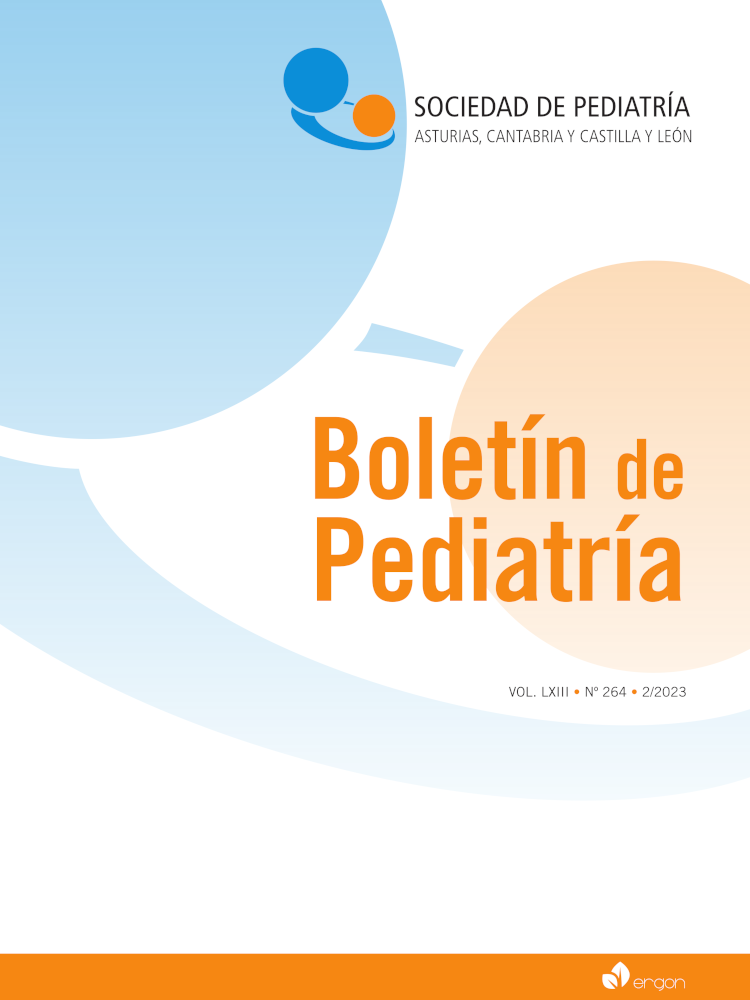Abstract
Introduction. The diagnosis of oculus atrial vertebral spectrum syndrome (OAVS) is based on phenotypic findings at birth. We present this case because of its peculiar clinical presentation and its low frequency.
Clinical case. Late preterm newborn with prenatal diagnosis of atretic cephalocele cephalocele admitted to the Neonatology Unit. Upon arrival at the Unit, bilateral preauricular mamelons with possible fistula, apparent stenosis of the external auditory canals, hypertelorism, micrognathia, and a limbar dermoid in the right eye were observed. Brain MRI is performed, which confirms atretic cephalocele (not communicating with the cerebral parenchyma), with meningeal remains and degenerated neural tissue inside, being successfully operated on in the first week of life. On the other hand, radiological studies are expanded aiming at asymmetry and stenosis of both external auditory canals, double right internal auditory canal and severe hypoplasia of the ascending branches of the jaw that condition an important micrognathia. The patient’s phenotype, along with radiological findings, are compatible with OAVS.
Comments. The case is interesting because of the peculiar clinical presentation, since in the literature consulted, there is no published case with the particularity of our patient, an atretic cephalocele. OAVS is a rare congenital entity, characterized by the association of ocular, auricular, mandibular and vertebral anomalies, and whose etiology remains unknown, presenting a clinical diagnosis, according to the criteria of Feigold and Baum. Its prognosis and treatment is variable, depending on the accompanying manifestations.

This work is licensed under a Creative Commons Attribution-NonCommercial 4.0 International License.
Copyright (c) 2024 Boletín de Pediatría
